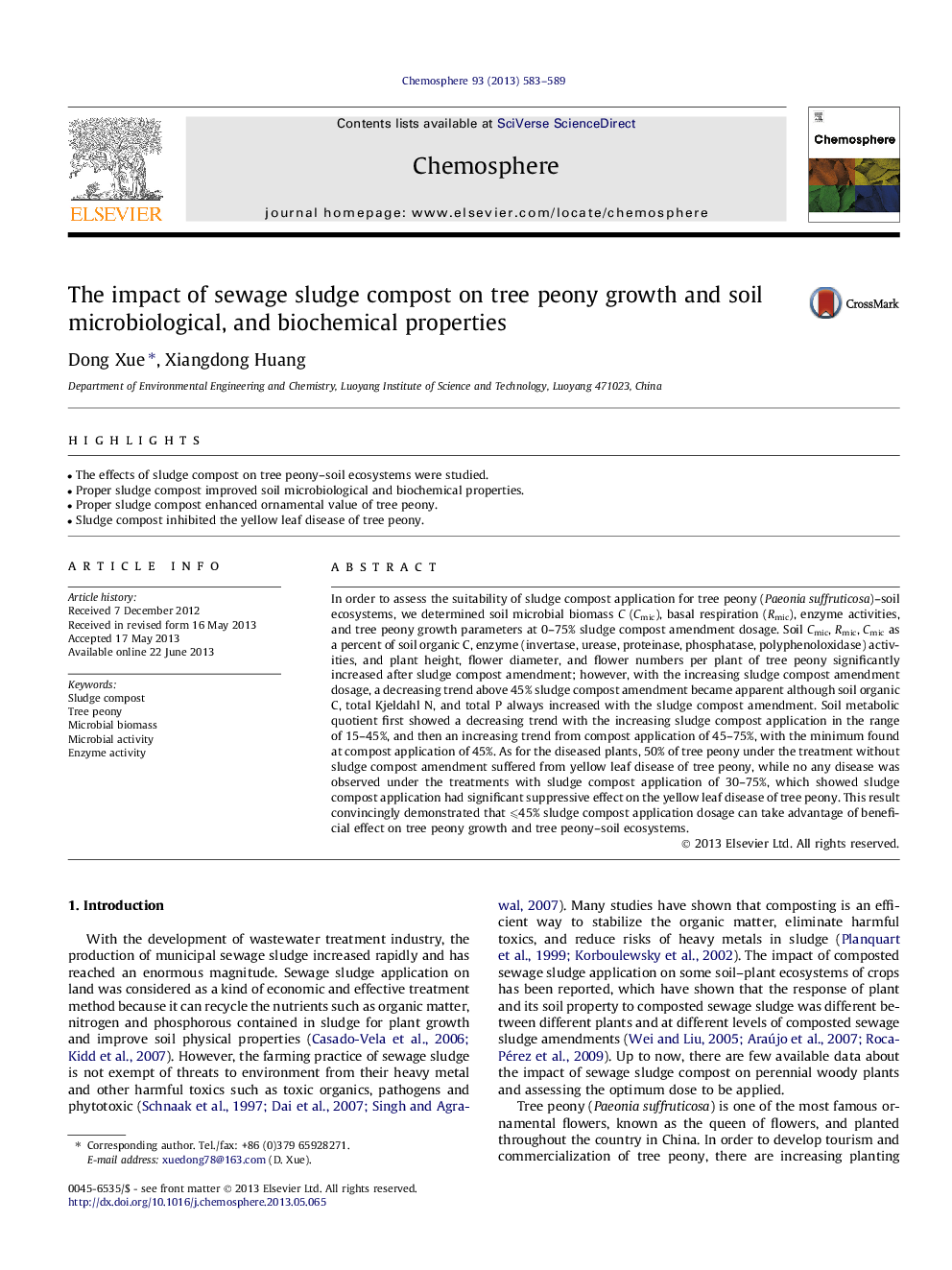| Article ID | Journal | Published Year | Pages | File Type |
|---|---|---|---|---|
| 4409215 | Chemosphere | 2013 | 7 Pages |
•The effects of sludge compost on tree peony–soil ecosystems were studied.•Proper sludge compost improved soil microbiological and biochemical properties.•Proper sludge compost enhanced ornamental value of tree peony.•Sludge compost inhibited the yellow leaf disease of tree peony.
In order to assess the suitability of sludge compost application for tree peony (Paeonia suffruticosa)–soil ecosystems, we determined soil microbial biomass C (Cmic), basal respiration (Rmic), enzyme activities, and tree peony growth parameters at 0–75% sludge compost amendment dosage. Soil Cmic, Rmic, Cmic as a percent of soil organic C, enzyme (invertase, urease, proteinase, phosphatase, polyphenoloxidase) activities, and plant height, flower diameter, and flower numbers per plant of tree peony significantly increased after sludge compost amendment; however, with the increasing sludge compost amendment dosage, a decreasing trend above 45% sludge compost amendment became apparent although soil organic C, total Kjeldahl N, and total P always increased with the sludge compost amendment. Soil metabolic quotient first showed a decreasing trend with the increasing sludge compost application in the range of 15–45%, and then an increasing trend from compost application of 45–75%, with the minimum found at compost application of 45%. As for the diseased plants, 50% of tree peony under the treatment without sludge compost amendment suffered from yellow leaf disease of tree peony, while no any disease was observed under the treatments with sludge compost application of 30–75%, which showed sludge compost application had significant suppressive effect on the yellow leaf disease of tree peony. This result convincingly demonstrated that ⩽45% sludge compost application dosage can take advantage of beneficial effect on tree peony growth and tree peony–soil ecosystems.
